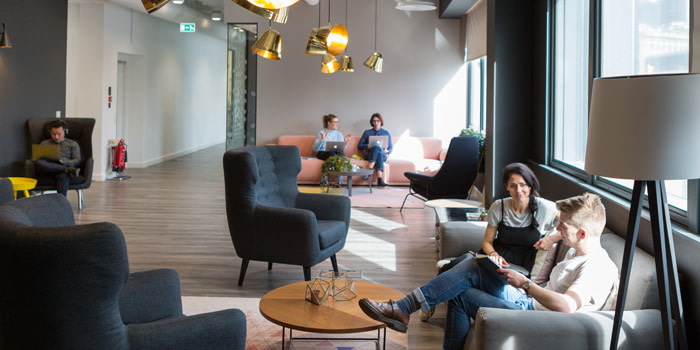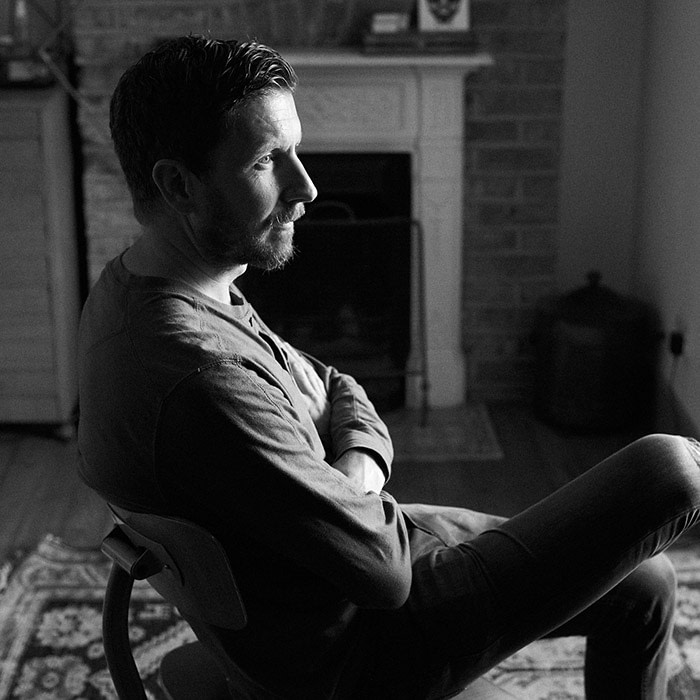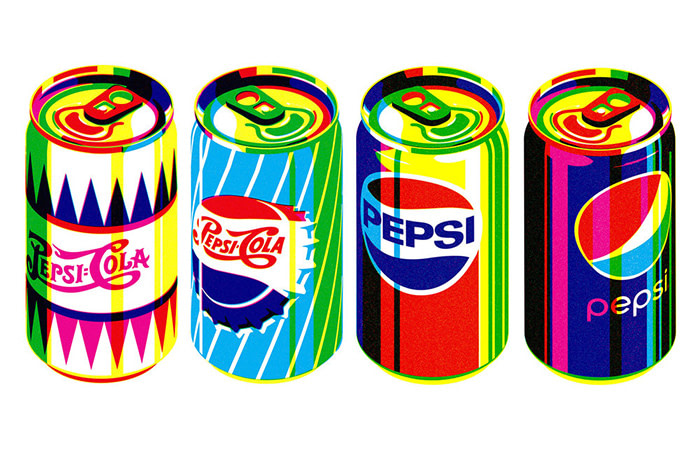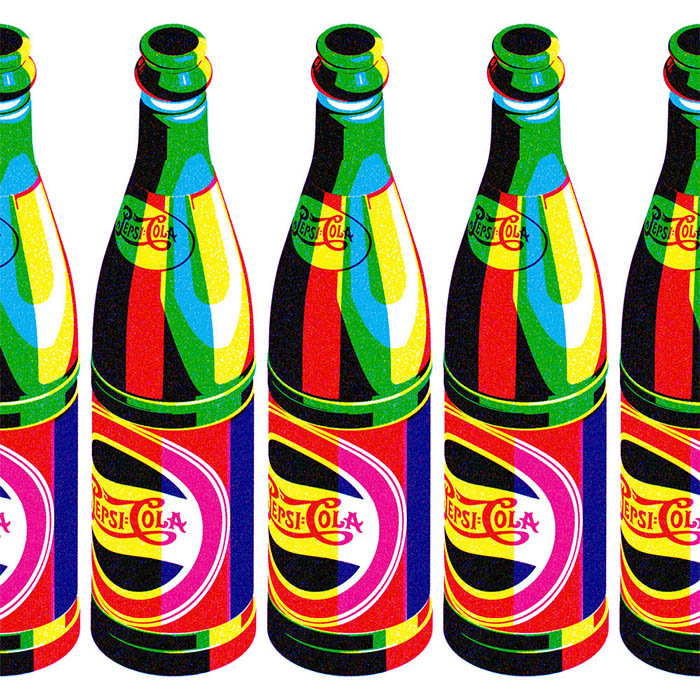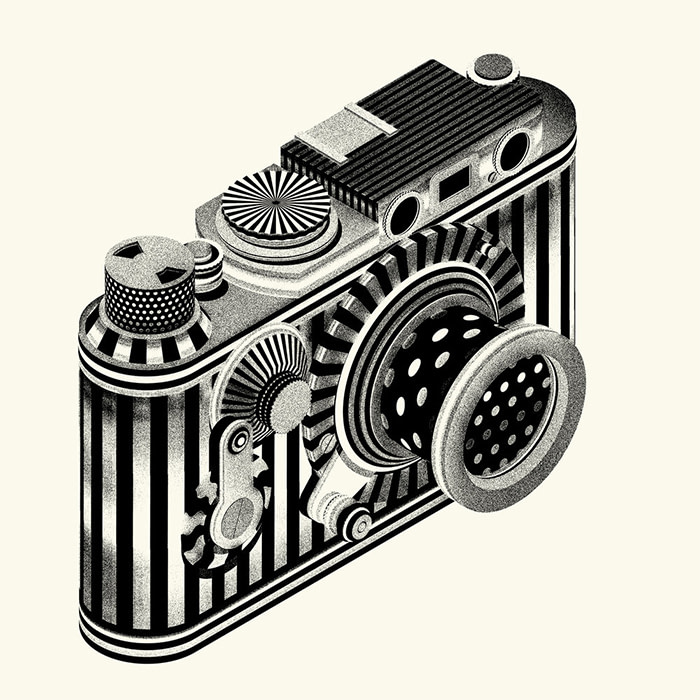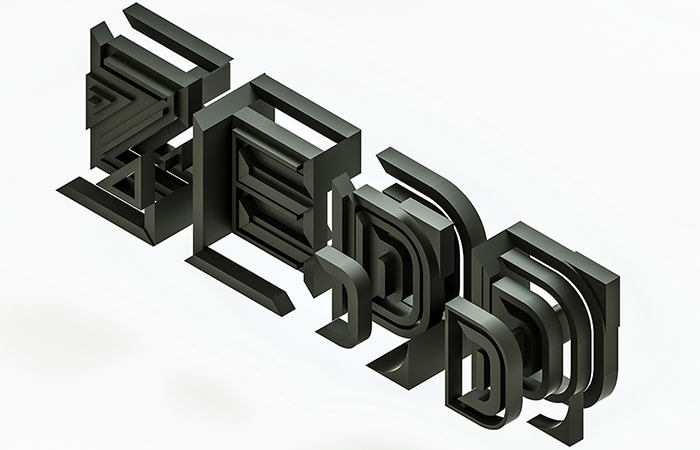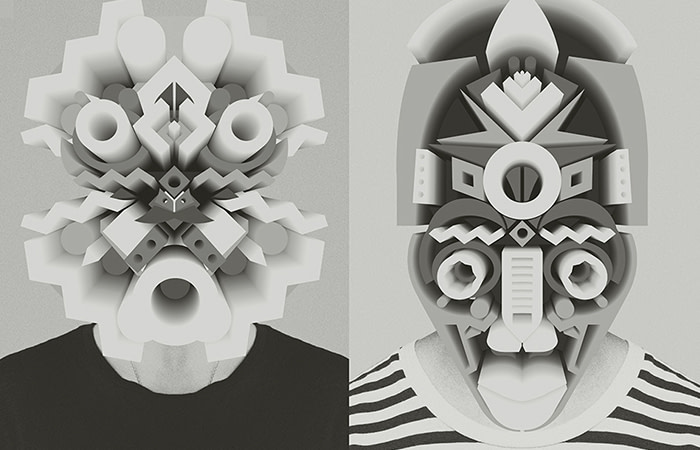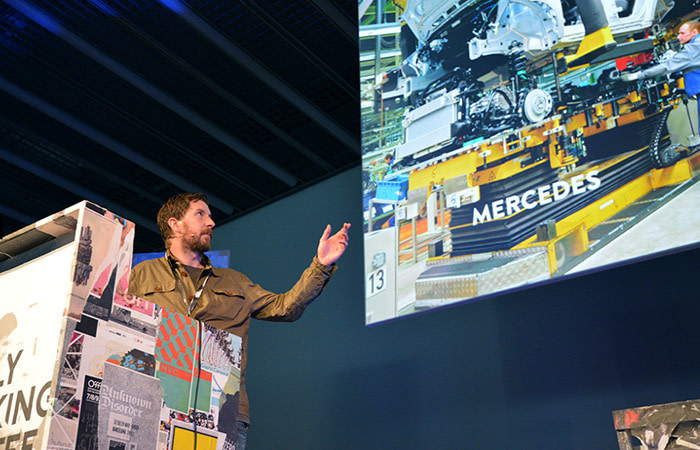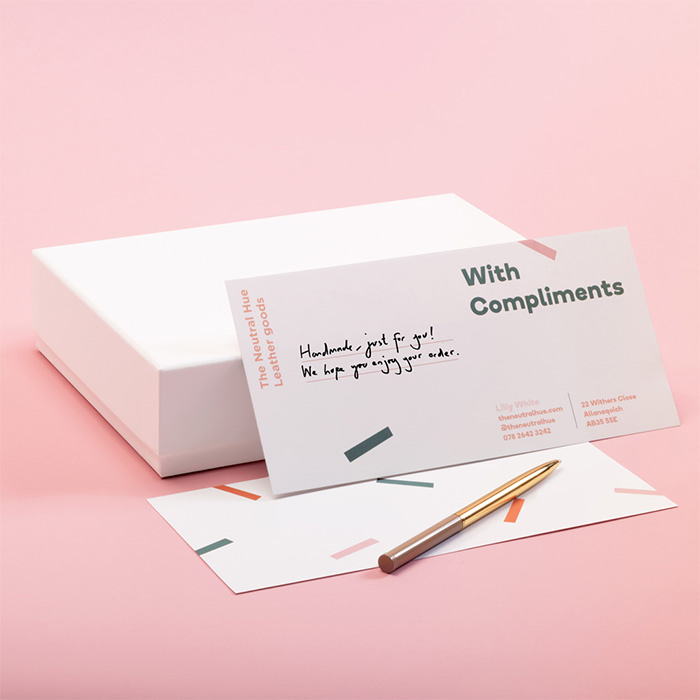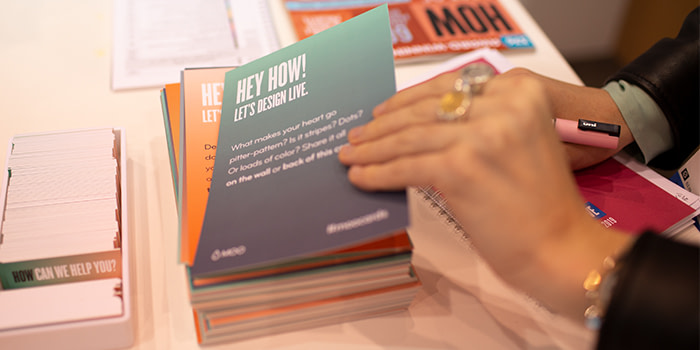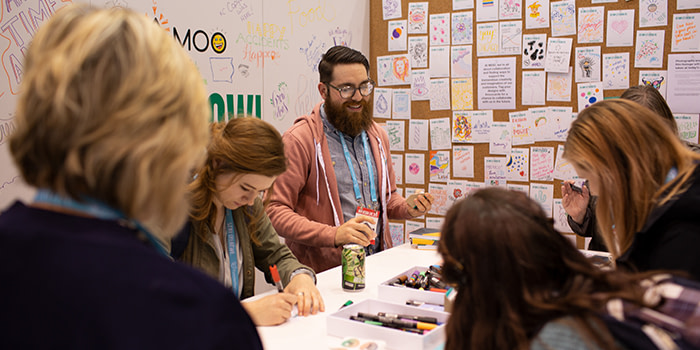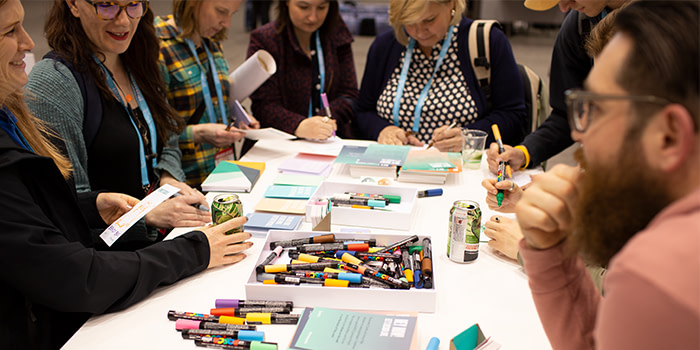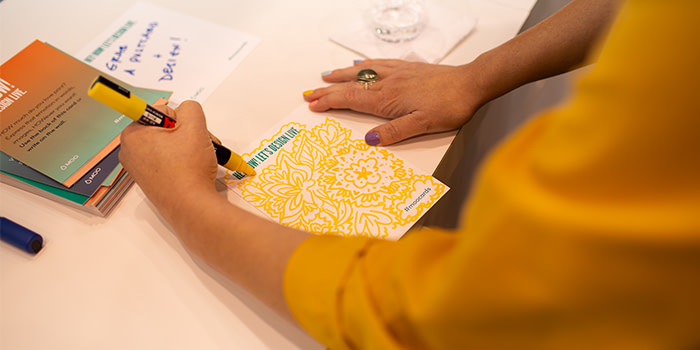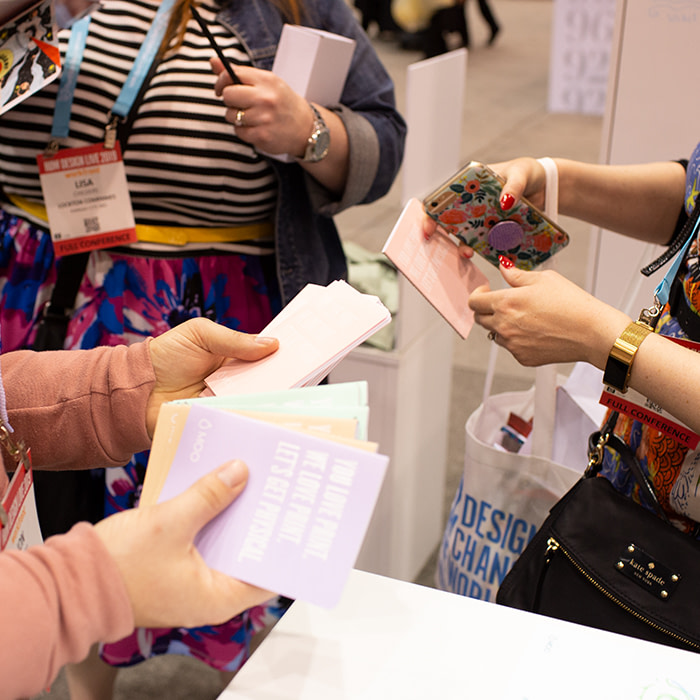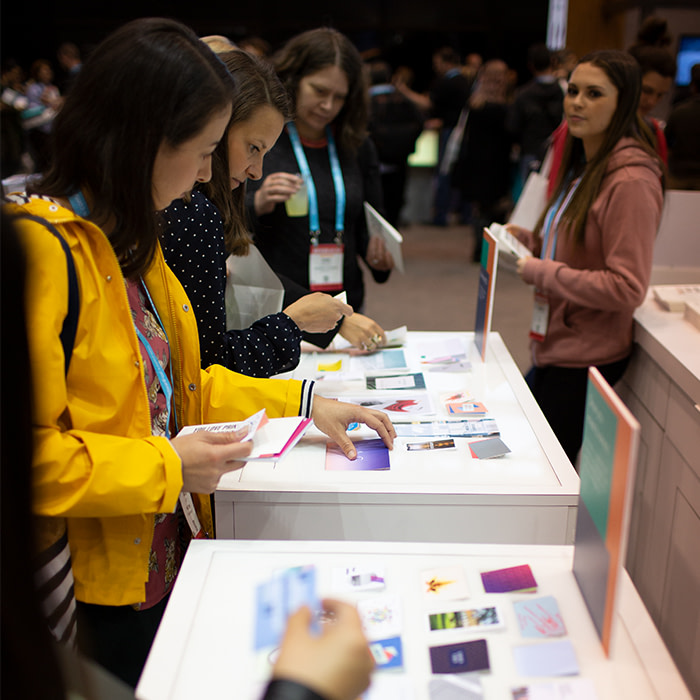7 reasons coworking can benefit your start-up

Sooner or later, the kitchen table just won’t be big enough. Coworking gives you the room you need and so much more besides. Here are a few things we love about coworking for start-ups.
How co-working spaces can benefit your start-up
There are lots of great reasons why people enjoy coworking spaces. It could be the buzz of an office environment, being in a central location, or the experience of working with like-minded people. But aside from the social perks, coworking can be a smart strategic move for a small business, too.
Many start-up companies and freelancers find that coworking is a great way to increase their team productivity, time management, opportunities and business growth. The proof is in the success stories; tech giants including Uber, Indiegogo and even Instagram all started out in local coworking spaces before making it big.
Here are some of the reasons why you should follow their lead:
1. It can seriously cut your costs
Let’s be real: low start-up costs are a major boost for a growing business. A coworking space typically costs less than leasing an entire office, because the overheads are split between all of the members.
Although the fees may be comparable to paying monthly rent, the advantage with shared workspaces is that the cost is an all-in-one price. In return for a monthly or quarterly fee, high-speed internet, furniture and desks, heating and lighting, and any business property fees or taxes can betaken care of for you. The deal might even include free coffee –- if you’re lucky.
Add up the expense of setting up all of that yourself, plus the extra hassle of choosing suppliers and arranging installations, and coworking is almost guaranteed to come out on top.
2. It’s getting more and more common
Thanks to the benefits of coworking – like flexibility, low costs and low commitment – shared workspaces are springing up in towns and cities all over the world. It’s easy to find coworking options in most major cities just from a quick Google search..
And if nothing’s obviously available, you can often find spaces through word of mouth, by asking on social media, or by checking out artist studio space or local co-operatives. These might not be coworking spaces in name, but they can offer many of the same benefits.
3. There’s a ready-made office culture
Employers are becoming more and more aware of the importance of a great workplace culture. Fortunately, coworking allows you to tap into existing communities that have developed their culture already. You just need to pick the one that’s right for you.
Working in a wider community means that your own company culture is likely to develop in a well rounded way thanks to a range of different influences from the people around you. Working alongside freelancers who choose their own hours can be a great way to recognize the value of work-life-balance, for example.
4. You’re part of a diverse community
From other small business owners to freelancers, the mix of people is one of the core strengths of coworking spaces. It’s helpful for making contacts in other industries, and it means every day is full of natural networking opportunities.
It’s also a great environment for developing collaborations and mentor relationships, since you’re always in the same place with a rich mix of people who can benefit from your knowledge and you from theirs.
5. It’s really flexible
Coworking probably isn’t forever – whether it’s in a few months or a few years, as your start-up continues to grow you’ll probably want to move into a space you can truly make your own. Fortunately, the flexibility of coworking means that moving out can be a smooth transition.
Often it’s as simple as giving a month’s notice and saying your goodbyes (hopefully with a great party to see you on your way). You won’t have to move or sell your office furniture, cancel phone, utility and internet plans, or find a new tenant to take over your lease.
Coworking flexibility helps in other ways too. Team growing? Simply rent more desks as and when you need them. Moving between cities? Not a problem. Coworking networks such as WeWork, Regus and Impact Hub have multiple offices in different towns, and even countries, so you can benefit from a local pied-a-terre when your work takes you further afield.
6. You’re in a great location
For a cost-conscious start-up, the best office space in the central area of your town or city is often more expensive than you’d like, so you may be limited to cheaper options in less convenient areas. With coworking spaces, the locations tend to be very central, which makes life easier for staff who are commuting in. It also opens up the option for team-boosting benefits like delicious lunches and after-work drinks.
7. It can help you develop new business
Coworking spaces can help you make money as well as save it. You may find that your office mates are potential clients who need the kind of services you provide and like the idea of supporting a fellow coworker.
You may get referrals from coworkers, too. They may have more jobs than they can handle and offer to pass a client your way, or they may have received an enquiry about a type of work they can’t offer, but you can.
Some coworking spaces benefit their members through their marketing, too. See if your coworking space has a website or social media that can help to promote your business. It’s good publicity for you, and it helps them show how successful coworking for start-ups can be.
For more on the benefits of coworking, take a look at our guide to choosing a coworking space
A recent host of Friday Night Sketch, Steven Wilson’s designs have attracted globally recognized clients to his studio. MOO finds out how his career took shape.
Born in London, Steven Wilson studied illustration at the University of Brighton, where he now runs his eponymous design studio.
His bold, graphic takes on everyday objects, blending analog and digital techniques, have attracted high-profile clients including Nike, MTV, The New York Times, and Karl Lagerfeld.
Steven recently hosted Friday Night Sketch at the Design Museum on the topic of drawing with shapes. MOO caught up with Steven to discuss his tips for graduates, how shapes have influenced his work, and how a Xerox machine helped him develop his distinctive style.
How did you develop an interest in illustration?
Neither of my parents were particularly creative, but my grandad enjoyed drawing, and would come over every Sunday so we could sit together and draw. We’d sketch stuff we saw around the house, or he’d bring round a book of photographs and we’d try horses and animals.
Because I was drawing regularly, I eventually got fairly good compared to my peers, and when people tell you you’re good at drawing, it becomes your thing – something you want to impress the other kids with.
How did your style evolve from those early days drawing with your grandfather?
I’d learned to represent an object as the eye sees it – but when you get to university and study illustration, it’s about creating your own visual language. I had to rethink how I was approaching my work – I still find it difficult diving in, doing something abstract and feeling completely satisfied with it.
Even if I’ve made an object quite abstract afterwards, I like to have something in it that’s recognizable and relatable. For example, I was asked to draw some icons for the launch of NYCGO in New York, including a hotdog and a trainer.
The way I approached the project was to separate each image into different layers of color. Looking at each layer on its own, the image is unrecognizable. But when they come together, you’ve produced a unique take on a familiar object, which is a theme that runs through my work.
What inspired your signature layered printing technique?
At university, the screenprinting studio was always busy – but I really liked that process of separating work into layers and printing them up in a very graphic way.
Then, I read a book by David Hockney, who reproduced the same technique on a color Xerox photocopier. He’d convert a drawing into three layers using black templates, then copy them onto a single sheet of paper, adding a different color for each layer.
With screenprint, you can spend two days on one image, but using Hockney’s method, I could recreate the same look in minutes. Because it was so quick and cheap, I could easily experiment.
I worked out that cyan, magenta and yellow were the three colors that worked best with the technique, because when they overlaid, they produced really nice secondary colors.
I use exactly the same principle today on projects including my Karl Lagerfeld collection – only on a computer. And I still find old books or posters and use them to lift another artist’s technique, rather than their visual style or aesthetic.
How did your career get off the ground after graduation?
I naively set up as a freelancer illustrator straight out of university, and got nowhere for two years. I’d look through magazines and newspapers for art directors’ contact details, then either send out Postcards of my latest work, or email samples over.
Eventually, I got my first paid commission from The Guardian, after someone took a chance on me – sometimes, you just need a break to get you going. After that, a friend helped me land a job creating an album cover, which lead to designing a poster for MTV, which helped me get an agent – and my career moved on from there.
What are the benefits of working with both analog and digital techniques?
At university, everything was analog – when I left, illustrators were on the cusp of using computers. So for the two years after graduating, I had to teach myself how to use Photoshop.
It was a steep learning curve, but exciting discovering digital tools for the first time. I’d combine analog techniques, like paint splats, with digital drawings, and that was the style that eventually got me noticed.
Because of my background, I tend to be quite experimental and versatile – there are a huge array of possibilities of how I might answer a brief. Sometimes I still do things by hand, sometimes I go very digital with 3D or animation, and sometimes it’ll be a combination of the two.
You hosted Friday Night Sketch on ‘Drawing with Shapes’. Do shapes play an important role in your work?
Because I like to experiment, I also try to set rules and restrictions for each project, to narrow down my options – and using shapes is one of the ways I do that. It’s something I’ve learnt to do more of as I’ve gone on.
For example, I did a project for the Offf festival in Barcelona, where I had to make a set of masks. Offf’s logo is just three very graphic shapes, so I added some of my own and made the masks using only eight or ten different shapes. Restrictions help to focus my mind, and the end result is work with a stronger identity.
What’s your advice for new design graduates?
Perseverance. Too many graduates from my class got full-time jobs in other areas, thinking they’d come back to illustration – but if it’s genuinely what you want to do, the best time to establish yourself is when you’re young.
I also think it’s important to be open-minded. Too many students get stuck in styles of working, but through trial and error, you can discover great new things. Your mistakes might even lead to the style you end up becoming associated with.
I’ve had friends who’ve been very successful illustrators for a short time, but then their style has become used to death, or not relevant anymore. Being versatile gives you a better chance of a long career.
Excited by Friday Night Sketch? We asked artist and educator Soofiya to give us their take on Mapping Memories
Our MOOcrew are a talented bunch. Wonder what it’s like to work at our headquarters? Take a peek at what it’s like to work a day in the life of a MOOster…
Phil Bailey
Hi, I’m Phil, I work in the creative team and I’ve been at MOO for 8 months.
At MOO, I’m responsible for…
Creating commercially aware, innovative and on-brand designs for various stakeholders and areas of the business. My work varies a lot, which I love. I get to work across different channels which include email, direct mail print, social media, digital, MOO.com, PR, MBS (MOO Business Services), events, internal comms, and others.
I got my role at MOO by…
Applying through The Dots, completing a design task and winning over my lovely team during the interview stage.
My morning routine is…
Walking to work (if it’s not raining). I have breakfast, with an Instagram scroll. Quick catch up with the team. Check emails, suss out my workload, and then get started.
A typical working day is…
A collaborative effort to meet deadlines and reviews! For me, a lot of my time is spent concepting or preparing presentations for reviews with our creative team or with stakeholders. I’ll often be speaking to our copy team so that the messaging / visuals of a project are aligned. I work with our in house photographers to help bring our concepts to life in the studio through art direction & styling. I also work closely with our artwork team who do an incredible job retouching, editing and exporting final assets.
Something people don’t know about my role is…
Well. My first project at MOO involved me dressing up in a boiler suit & goggles, I popped balloons filled with poster paint in the photography studio for a ‘surprise email’ I was creating. Not every day is like that, but sometimes I’m allowed to make a big mess, and it’s absolutely fine. As long as it looks good.
My proudest moment at MOO was…
Completing my first MOO.com project, which was a refresh of our Luxe category & product pages. It was so exciting to see the images that I had worked on so intensely go live on the website, for everyone to see!
The thing I like most about working at MOO is…
The people; my team and colleagues are honest, diverse and inspiring; in London and across the pond. Also I love an occasional dog hug from Mango (the Ibizan hound) & Banyan (the Sri Lankan street dog).
On the weekend, you’ll find me…
Amongst friends, probably at brunch. Or at the Tate. Or at home visiting my baby niece.
If I wasn’t doing this as a career, I’d be…
Living in a warmer climate, maybe as a dog walker
The best career advice I’ve ever been given…
Don’t show any work you don’t like or aren’t proud of!
Want to join our #MOOCrew? Check out our current vacancies
Our MOOcrew are a pretty talented bunch. Wonder what it’s like to work at our headquarters? Here’s what a typical day in the life of a MOOster is really like…
Alexander Graham
My name is Alexander, I work in Design Services as a Design Services Manager and I’ve been at MOO for 8 years.
At MOO, I’m responsible for…
Mentoring and coaching graphic designers and production artists, while managing the creation of multiple customer design projects on a daily basis.
I got my role at MOO by…
Starting in customer service as an artworker. I then moved to work as a creative artworker in the sales team. From there, I gradually worked towards the management role I’m currently in.
My morning routine is…
Check-in with the team, make sure we’re set up for a successful day, then get myself a coffee.
A typical working day is…
Assigning out customer design requests to graphic designers and production artists. I’ll then have one-to-ones with my direct reports, and check in with my peers across the other MOO offices in Davol and Denver. I’ll also work on projects to ensure we’re providing the best possible service to our customers.
Something people don’t know about my role is…
It involves art direction. On a daily basis, we oversee the creative initiative from our graphic designers, while focusing on communication and strategy from messaging and design.
My proudest moment at MOO was…
Working with our client, Adidas on their business cards.
The thing I like most about working at MOO is…
The open and honest culture. It’s very relaxed here, and I feel I’m able to communicate with anyone in the building. Also, the office space is great – very welcoming.
On the weekend, you’ll find me…
Running around with my two sons at soft play, shopping for the latest trainers or doing some sort of DIY project.
If I wasn’t doing this as a career, I’d be…
Working as a technician, fixing computers.
The best career advice I’ve ever been given…
“Do not seek praise, seek criticism.”
Want to join our #MOOCrew? Check out our current vacancies
Great customer service isn’t just a nice thing to have. It can be the crucial ingredient that puts your business ahead of the rest. Here’s 3 essential tips for awesome customer service.
Fact: improving customer service helps businesses grow. From managing customer expectations, to ensuring satisfaction with your product or service—a strong customer service team can not only attract new customers to your business, but keep existing customers loyal.
What’s the definition of customer service?
Customer service is the action you take as a business to help people get the best possible experience of your products and services.
That includes the advice you provide when they’re considering a purchase, the adjustments you make to fit your offering to their needs, resolving any issues they may have, and the customer support you give them after the sale is made.
Customer service is about people first and foremost. It’s the process of building a relationship with your customer, whether it’s a short-term connection or lifelong brand loyalty.
More often than not, it’s the result of individuals in your business acting in ways that are focused on customer success. All those positive moments are what make up great customer service, and they’re a result of a company culture that values and promotes great customer experience.
Why does it matter?
Customer service is important because it’s what connects your products and services with their end users – it’s where the rubber meets the road.
It helps make sure potential customers get a good match between what you offer and what they need, through careful listening and good advice.
It can also act as a safety net when things don’t go completely to plan, and it could even turn a poor experience into a positive one. For example, if a customer needs to return faulty goods, how you respond to that issue could actually strengthen their opinion of you—if you are fast, courteous and effective in solving the problem.
Although it’s about relationships first, good customer service can play a role in optimizing your business operations and processes too. With a customer-focused approach, you’re more likely to choose software and methodologies that please your customer base and deliver better results for them – and by extension, for your business.
How do you deliver the best customer experience?
The business world has become highly attuned to the power of a great customer experience, and there are lots of strategies, tools and techniques out there for making it happen. Here are a few must-haves for any new business looking to start out on the right foot.
1. Make your customer service personal
Why is personalized customer service important?
Personalized experiences show your customers that you know them and value them, and that when they buy from you it’s not just a transaction, but part of a larger business relationship.
Knowing relevant facts about your customers means you can serve them more quickly and easily, and you can make sure their preferences are met without them having to ask.
It’s also a proven way to encourage more sales. People love getting customized attention – and the numbers back it up. According to research, birthday campaigns – personalized promotions you send your customers on their birthday – lead to a 481% increase in transaction rates and a 382% increase in revenue. Clearly, making your customer feel special will result in increased engagement and purchasing patterns.
Know your customer, grow your business
Have you ever received a robotic business email? You know, the kind that was copied and pasted from a template? There’s a good chance you didn’t engage with the email like the sender expected you to.
When you’re dealing with a large number of customers or high volume of orders, personalization can really help warm up an interaction that might otherwise feel cold and systematic. Knowing your customer and storing their information with a good CRM (customer relationship management) system means you can deliver that personal touch at scale.
A good-quality CRM system – such as Mailchimp or Salesforce – acts as a centralized hub for customer service, tracking a customer’s past purchases and interactions with you across multiple channels. It allows you to save time and please your customers by not asking for details repeatedly, and it means customer support staff have information on hand when they answer a query. It also allows you to send personalized messages – like those super-popular birthday campaigns.
Customer skills for front-line staff
As we’ve explored already, the behavior of people in your company is a make-or-break factor in great customer experiences. And when it comes to personalization, human interaction is about as powerful as it gets. So it’s worth knowing the most important service skills and making sure your team’s excelling at them.
A few qualities of great customer service people:
- Top-notch time-management: customer service is hectic and attention needs to be divided so that every customer feels listened to.
- A friendly manner: cheerful, friendly and receptive people – and people who can maintain these qualities under pressure – can make a big contribution to customer satisfaction.
- Attention to detail: handling multiple customer cases means a huge volume of information coming at you. And every bit is crucially important to one of your customers. Remembering details and following through on specific requests is a fast-track route to customer loyalty.
Some of these things are personal qualities that come naturally to certain people, while others are a matter of training.
So when you’re building up a customer service skills base, you have two strategic priorities:
- Staff training: give your staff the support and guidance they need to manage different customer-facing scenarios, including returns, enquiries and complaints. Make sure they know there’s a process in place and who they can turn to for help and information.
- Recruitment: during the hiring process, be tuned in to the personal traits that make someone a ‘natural’ at customer support or customer service. Qualities like patience, optimism, listening and friendliness are all key.
That way you can make sure you have the personalities and abilities best suited to an outstanding customer experience.
2. Be prepared for customer queries (of all kinds)
A golden rule of customer service is to be available and responsive to customers whenever, and however, they reach out to you.
If you can handle customer queries and enquiries quickly, and you’re able to respond to all types of queries with solutions at the ready, you’ll quickly see positive results in how your customers regard you.
How to tackle customer queries well
Positive query
Has a customer got in touch to say how happy they are? Congratulations! It’s an awesome feeling, and it’s also an opportunity to make the relationship even stronger. You can respond to this kind of interaction by:
- Learning from them: ask the customer what really worked for them and if there’s anything that could be done even better.
- Giving them a shout out: celebrate your happy customer and give them some recognition with a social media shout-out.
- Asking for a testimonial or review: ask your happy customer if they’d be willing to be quoted as a testimonial on your website, or if they’ll pen a short review of your service.
Negative query
Complaints happen. No matter how high your standards are, there will always be hiccups, whether it’s a terse phone call or a nonplussed online review. How you handle negative feedback is what matters most. Must dos:
- Listen and empathise: Make contact with the customer or be responsive when they contact you. Be clear about what happened and how it made the customer feel. Let them know that customer satisfaction is important to you and that you want to set things right.
- Focus on solutions: Make sure you – or your staff member – can offer a range of solutions to fit different customer issues, whether it’s a refund, an apology or a change of policy. Nobody wants to expect problems, but it’s better to have a solution at the ready than have to put them on hold and come up with a plan.
- Explain what’s next: Give the customer a clear commitment about what you will do in response to their query and when it will happen. For example, they’ll get a refund to their bank account within 2 days, or a manager will call them back later that morning.
- Learn from it: Complaints aren’t fun, but constructive feedback can be a fantastic resource. Take on board what happened and feed the insights back into your business, especially if the same complaint appears multiple times from different people.
Question
Whether a customer wants to know where their order is, if your product is vegan or halal, or how they can make an overseas order, these rules apply:
- Answer quickly: Have a minimum timeframe for your replies. Even better, communicate that timeframe to your customer with an auto-reply or a clear policy on your website.
- Offer self-service solutions: Some questions are common enough that you can predict them and answer in advance. While it’s nice to chat, sometimes the best service you can offer is a handy FAQ or chatbot service that solves the query with minimal effort.
- Communicate well internally: Some customer questions demand specific knowledge that only a few people in your company have. Clear lines of communication and handy channels, such as IM or Slack, let you find answers fast, rather than having to call someone back or refer them to your colleague.
3. Encourage customer loyalty
What is customer loyalty?
Customer loyalty is a result of repeated positive experiences with a business. Over time, basic customer satisfaction becomes something more enduring and personal – it becomes a belief in the high quality of your brand.
The value of a loyal customer
Loyal customers are more likely to:
- make repeat purchases
- choose you over your competitors when the offerings are more-or-less equivalent
- say good things about you to their friends, colleagues and anyone who reads their online reviews.
All of that translates into more sales and better brand awareness.
That’s why many businesses treat Net Promoter Score (NPS) as such a crucial metric. It’s a measure of how many customers would recommend them to family or friends, and it reflects the level of loyalty they have achieved.
Building loyalty strategically
Businesses often develop specific projects aimed at building loyalty, such as customer retention strategies and customer loyalty programs.
The idea of a customer loyalty program is a familiar one to anybody who has collected points at their favorite store or joined a VIP customer program. It’s a kind of quid-pro-quo deal that offers clear rewards to the customer for their repeat business. It’s more about practical benefits than developing brand loyalty for its own sake, but it can support and drive the loyalty process and encourage it to build over time as it brings customers back to you again and again. For a new business though, loyalty programs can be cost-prohibitive to set up and slow to deliver returns.
Other customer retention projects work by creating an easy route for the customer and breaking down barriers to purchase. An example might be a smartphone app that gives customers a speedy order experience or delivers exclusive discounts and downloadable vouchers. If you want to create your own physical Gift Certificates and vouchers online, click here.
How does good customer service improve customer retention?
Good service, alongside high-quality products and a strong brand, helps turn customers into loyal clients and even advocates for your brand. In fact, it’s a key ingredient in the mix.
The reason customer service so important is because of how loyalty develops. Customer loyalty builds gradually, as a result of multiple positive experiences over time.
Each good experience strengthens an expectation of more good experiences in the future, and eventually customers associate your business with satisfaction and prefers your brand on principle, rather than choosing you on a case-by-case basis.
Some of those good experiences are product or service related, such as receiving good value for money or having a product with all the right features. But many more of them are about personal interactions, like a friendly reception in store, an easy-to-use app or a welcoming voice over the phone.
And while those things aren’t as high-profile or long-lasting as your products or your brand, they matter just as much.
Looking for more new start-up tips? Check out our steps to starting your own small business
Exhibitions and trade shows are an opportunity to entice new customers, scope out industry trends and make a splash with your brand. Here’s how to create unforgettable connections.
1. Choose the right exhibition for your business
Taking part in a trade event or exhibition can be a huge step forward for your business. It can bring in new leads and customers, boost your brand awareness, and give you insights into what competitors are doing. It also gives you invaluable face-to-face marketing time with an audience of people who are already tuned in to the type of business you do, so you can really explore what really gets your target customers excited.
But for all those positive points, it also means a significant investment of your time and money. That’s why it’s important to consider carefully whether an event is the best next step for your business at the moment. It’s all too easy to get caught up in the excitement when an event is announced, but for the best outcomes, you need to keep cool and think strategically.
Are you 100% event-ready?
If you’re on top of all the points in this list, we’d say you’re in a pretty fantastic place to take part in an event.
Consider the costs
Look into how much money is involved in booking and equipping a stand, and develop a budget you can stick to.
Prepare your marketing materials
Stock up on take-aways like Flyers, Business Cards and Stickers, and don’t forget to factor in the cost of stand design – especially if you’re drafting in professional help.
Think about staff members
Who will be manning the stand? What’s the cost of their time and what would they otherwise be doing on the day?
Identify your top products and services
What will you focus on at the event? Is there a ‘hero’ product that best represents your brand image? Or a particularly successful product that you want to drive more sales of?
Set goals and objectives for the event
For example, what do you want to get out of the experience? How will you know if it’s been worth the investment?
Research your options and find the best event for you
If you’re confident that now is the right time to take your show on the road, it’s a good idea to spend a bit of time choosing your event with care, so that you get the very best experience and outcomes on the day. Here are some ideas for choosing the right exhibition:
Consider your audience
Having a clear view of who you want to attract can help narrow down the options. Is it a B2B or B2C crowd you’re after? Do you hope to make sales on the day, or are you aiming more for brand awareness and checking out the competition?
Stay in the event loop
Make sure you’re signed up to networking and event sites like Eventbrite and Meetup.com to get alerts about what’s happening locally.
Join online communities
Social media can be a trove of useful information and insider tips on the event circuit for your industry. Look for Facebook groups for event organisers and show traders in your field. These are often ‘closed’ or ‘private’ groups, so you may need to request to join.
Know your local area
Draw on local resources like your area’s Chamber of Commerce, guilds and societies or even libraries and community groups to find potential events.
2. Promote your presence at the event
Marketing in advance
Build up to the big day with a marketing campaign that lets potential customers know you’re going to be there:
Social media
It’s superb platform for building excitement. Use a little-and-often approach to remind people about your stand, and offer previews and hints about what’s in store on the day. Find out the event hashtag and use it in all your event-related updates on Twitter, Facebook and whichever other channels you use. You could even create a special offer for customers who find you through social media. This not only entices more visits to your booth, it’s also great for testing out which channels your customers are finding you on.
Advertising
This can be another handy option depending on your budget. Consider trade magazines – especially for trade shows and trade fairs where the audience is very specialized – and check with the event organisers whether there’s ad space available in the show brochure or website.
Email newsletters
Use your email newsletter to go into more detail about the event, including the days and times, where to find your stand on the floor plan, and what you have to offer on the day – whether that’s demonstrations, a chance to meet experts, a drop-in workshop or clinic, or a preview of new products and services.
Packaging
If you sell physical products, you could drop a Flyer into your packages to promote your presence at the event. Try adding an exclusive discount – maybe a rebate on the ticket price or a 10% off a purchase at your booth – to encourage your customers to visit.
Think about takeaway messages
As well as planning ahead, think about what happens after the event. Attendees are likely to go home buzzing with new ideas and information from the day. They’ll have seen a lot of businesses and absorbed a lot of ideas, so make the most of all the excitement.
It’s a good strategy to keep your message simple and specific – focus on a particular product or service, or support a single-minded marketing message in your exhibition stand design and marketing.
It may be helpful to think about your brand’s elevator pitch – a short, condensed summary of who you are and what you do. It’s what you want attendees to remember about you, even if they forget everything else. Make sure all staff involved in the event are on the same page with your messaging approach and have that elevator pitch front of mind on the day.
3. Set up a stand that demands attention
Grab attention with great design
The most important element of your display is clear branding and messaging. After all, you want people to be compelled to talk to you! Otherwise, you’re just another branded pen rattling around in another company’s tote bag.
An attractive booth is a great way to show customers your brand personality and get that polished, professional look. And a well designed exhibition stand can go a long way to making you stand out from the crowd.
It doesn’t have to be a one-off cost, either. If you’re going to do trade shows for a few years, it’s worth getting the highest-quality materials you can afford. This not only shows customers that you mean business, you can also use the materials for pop-up displays in-store events and brand photography.
Should you hire a designer for your trade show display?
For many businesses, bringing in a design expert to kit out their stand or booth is the best way forward. That’s not to say DIY stands can’t be hugely successful, but with so much riding on visual first impressions, a professionally crafted display can be a worthwhile investment – not to mention a time-saver that frees you up for other planning tasks. Here are some pointers to help you choose a designer.
Get personal recommendations
Designers and illustrators often find their clients locally, especially if they’re freelancers or small agencies. If you’ve seen artwork you like, ask the business owners who they used and how the service and turn-around-time was.
Compare a few quotes
Approach a few different designers for a chat about your project. This isn’t just to get the lowest price for the job, you’re also looking at how well you communicate and what kind of approach they take to your project. Finding the right fit will make the process much easier and more fun.
Questions to ask a potential designer
Before you decide on a designer for your event stand, there are a few important things to ask them:
- How they charge. Is it a one-off quote for the whole job, or do they bill by the hour? Will they need payment in advance, or do they bill after everything is signed off?
- How briefing works. A good creative result starts with a good creative brief, so make sure you establish how they like to kick off the project – it might be a meeting, a phone call or a written spec. Give as much information as possible so you have a shared idea of what you want the finished result to look like.
- Feedback and making changes. Make sure you have adjustments built into your quote, so if something’s not quite as you want it, you can ask the designer to tweak it without you paying more.
What does a successful event stand look like?
It’s in the right place
To maximize your footfall, make sure you research the event space a few months in advance. Where are the most popular events and speakers around your industry taking place? Can you get a spot near them? Even if it means paying a little bit more, choose a prime location. It could mean thousands of dollars in business—or more—down the road.
There’s merch and freebies
Everyone loves to pick up some goodies as they browse the stalls at an event. But don’t just go for candy and USB sticks. A fresh approach will make you memorable and can be a great ice-breaker too. Play to your strengths here. For example, if you’ve got a keen baker on your team, go for frosted mini cupcakes iced with your brand logo. Or if you’re blessed with design talent, give away some cool Stickers that promote your brand while looking good on the lid of someone’s laptop.
There’s prize draws
Rather than offering a little something for every visitor, you could invest the budget on a single, big hero prize (anything from a drone camera to dinner for two). Hold a draw for your big item, and use it as a chance to collect contact info from entrants to add to your leads. This will give you the opportunity to have longer conversations with potential clients.
It’s interactive
Give visitors a chance to get their hands on your products or prototypes by stocking your stand with samples and giving people free rein to explore and ask questions. You can also provide tablets or touchscreen devices to let them explore digitally and start becoming immersed in your brand.
There’s plenty of information to take away
Trade shows are one of the few places where people actually take your promotional print materials. That’s why you should make your Postcards, Business Cards and Stickers as eye-catching and on brand as possible.
If you don’t have a designer on your team, consider using a freelancer to create the product announcements and event invitations – maybe the same person doing your event stand, if you’ve decided to go that route.
You could go a step further and have a newsletter sign-up sheet so you can keep your new contacts up to date.
4. Connect with visitors
People like being around others who make them smile – so why not focus on being the exhibitor that makes attendees feel great?
Events are the best opportunity to demonstrate your brand voice. Hopefully, your number one priority is delighting your customers. That’s why you should staff your event with friendly company representatives and stay engaged with visitors. An attendee will remember a great interaction with one of your teammates more than anything.
Know who you’re talking to
According to TSNN, trade show attendees fall into a few distinct types, from the general visitors who pay attention to everything fairly equally, to the super-focused niche visitors who make a beeline for stands relevant to their specific interests.
If you want to attract visitors as broadly as possible, it’s worth knowing about these different groups and their motivations. You need to have general appeal, in the form of an attractive exhibition stand design, eye-catching displays and friendly staff – while also telegraphing what you have to offer to that more specialized audience. Cues like brand names, logos and the language you use in your on-stand marketing can all strengthen your specialist appeal.
Keep conversations going
When someone visits your stand, you have the chance to forge an ongoing connection that could lead to new business opportunities or collaborative work. To get to that point, you need to maintain an enjoyable conversation and build from a casual chat to a more meaningful exchange. Here are some ways to do just that:
Smile and make eye contact
Use non-verbal communication to welcome passers-by to your booth and encourage them to stop and say hello. When they do, be quick to extend a handshake and exchange names.
Get to know them
Find out what brought them to the event, how it’s going for them and what they’ve enjoyed so far. As well as talking directly about your business, build rapport by finding out where they’ve studied, what their goals are and what they enjoy in their free time. It may seem like small talk but it can help you establish a personal connection.
Look out for the best leads
Some visitors are more likely than others to turn into fruitful connections. Have a few ‘qualifying questions’ up your sleeve, such as ‘have you heard of our products?’ or ‘do you have X in place at the moment?’ Looking at their badge, if they’re wearing one, can also give useful clues about their fit for your business. If they are, you can go into more depth about what you have to offer.
Carry on the conversation
Before concluding your chat, establish ways to stay in touch with potential customers, whether it’s asking to follow or connect with them on social media, getting their email or swapping Business Cards.
5. Follow up with your exhibition stand visitors
The final piece of the puzzle? Follow up those leads! After the event, reach out to the potential customers you met and let them know you’d like to stay in touch and explore working together. Here’s how to follow up effectively after your big day.
Work methodically
After the trade fair flurry, you’ll be left with a big pile of cards or long list of email addresses and names. This is when it can get tricky, unless you have a systematic follow-up plan. One option is to collect all the names and details in a spreadsheet and assign them to members of your team. This means that not only is everyone responsible for their own leads, any leads without an obvious owner can be caught too.
Match the message to the medium
If you’re following up by email or mail, a letter-style format works well. If you’re using social media, the contact needs to be shorter and less formal in style. A phone call can be much more casual and personal, but it needs to come to a point and secure a meeting or it will quickly be forgotten.
Note the 48 hour trade show follow-up window
To make sure people don’t forget your face, follow up with potential customers within 48 hours. You’ll be fresh in their mind, and they’ll also have had the chance to relax and digest everything they saw and learned at the trade show.
Always say thank you
Frame your follow-up as a thank-you letter or message. By focusing on the benefits you got from the conversation with them, you can establish some feel-good vibes. And according to popular psychology, knowing they’ve done you a favor could actually make them like you more.
Personalize your follow-ups
Make sure to include a personalized detail about your conversation or the event in general. This will increase the likelihood that they’ll remember you and reply. Besides, with that great location, amazing print materials, and friendly staff, how could they not?
Fancy taking it up a notch? Why not try wowing the crowd at a public speaking event?
Photo credit: byronparkphotography.com
Our MOOcrew are a pretty talented bunch. Wonder what it’s like to work at our headquarters? Here’s what a typical day in the life of a MOOster is really like…
Sophie McMaster
My name is Sophie, I work in Customer Service and I’ve been at MOO for just under 3 years.
At MOO, I’m responsible for…
Managing a team of customer service representatives. I work with supervisors in both the UK and US to keep the team happy and to ensure our customers are receiving the best possible support.
I got my role at MOO by…
Interviewing for a customer service representative role. I started at MOO on the same day we moved to our shiny new office in Farringdon and from there worked my way up to becoming a team supervisor.
My morning routine is…
Mostly commuting! I live outside of London which means waking up early to catch the train. I like to catch up with the latest news on the journey. It gives me time to properly wake up! At the office, the first thing I do is grab a cup of tea – I couldn’t function without it!
A typical working day is…
Incredibly varied and usually very busy! I start the day by catching up on emails and sending a daily debrief to the team. It’s usually meetings from there – catching up with agents on my team or meeting with other supervisors or departments to work on updates and new initiatives. Throughout the day I could also be interviewing, supporting new agents with training, working on upcoming projects at my desk, or helping agents and customers on the floor.
Something people don’t know about my role is…
Just how many things we help with! We support our teams with such a large number of varied queries, so you quickly become an expert in lots of different areas. People turn to us for help with all sorts of things and we have to work really hard to be able to say ‘yes’ – there are often lots of factors and competing demands andpriorities that come into play.
My proudest moment at MOO was…
Helping to secure promotions for people on my team and seeing them flourish! It’s incredibly rewarding to know that I had a hand in helping someone to develop their skills and reach the career goal they’ve been chasing.
The thing I like most about working at MOO is…
The people! I’m lucky to work with a really great team, we have a real sense of genuine camaraderie in the office everyone is so friendly! MOO understands the importance of supporting it’s employees. Plus, the annual summer/Christmas parties aren’t bad either!
On the weekend, you’ll find me…
Relaxing with friends and family, enjoying a countryside walk with the dog, or attempting to bake something. Also, probably adding more books to my never-ending wish list.
If I wasn’t doing this as a career, I’d probably be…
Doing something similar in terms of helping people, possibly related to my degree in criminology and psychological studies.
The best career advice I’ve ever been given…
Is to work hard, have confidence and never underestimate yourself. You don’t know what you are capable of until you really push yourself and believe you can do it.


